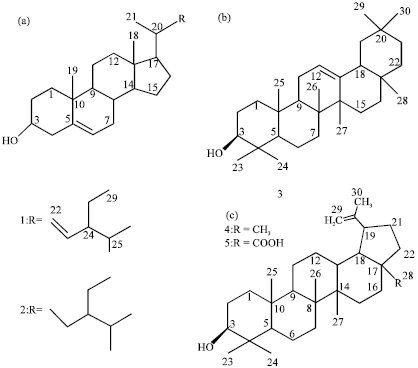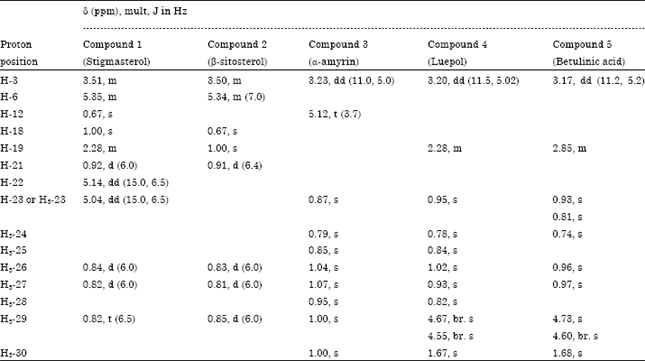Research Article
Steroids and Triterpenoids from Corypha taliera Roxb: A Critically Endangered Palm Species of Bangladesh
Department of Chemistry, Rajshahi University of Engineering and Technology, Rajshahi, Bangladesh
Md. Ashraful Alam
Department of Chemistry, Rajshahi University of Engineering and Technology, Rajshahi, Bangladesh
Ridwan Bin Rashid
Department of Microbiology, University of Dhaka, Dhaka-1000, Bangladesh
Muhammad Abdullah Al-Mansur
Bangladesh Council of Scientific and Industrial Research, Dr. Qudrat-I-Khuda Road, Dhanmondi, Dhaka-1205, Bangladesh
Mohammad S. Rahman
Phytochemical Research Laboratory, Department of Pharmaceutical Chemistry, Faculty of Pharmacy, University of Dhaka, Dhaka-1000, Bangladesh
Mohammad A. Rashid
Phytochemical Research Laboratory, Department of Pharmaceutical Chemistry, Faculty of Pharmacy, University of Dhaka, Dhaka-1000, Bangladesh










